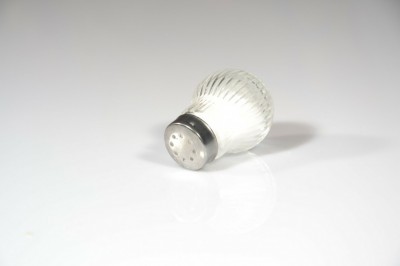5 Ways to Ensure Foolproof Home Made Chutney
Home made chutney is one of the most delicious of all home made goods and best of all it is very simple to make. What could be better than sitting down to a plate of succulent ham or beef accompanied by delicious home made chutney? Or a wonderful mature cheese and chutney sandwich? A couple of pots of home made chutney makes the perfect hostess gift, or combine into a hamper with other home made goodies for a luxury Christmas, anniversary or birthday present.
The beauty of chutney is that you can pretty much make it out of any type of fruit or vegetables, indeed, you can mix and match to your hearts content. Perhaps the receipe calls for 1kg of tomatoes, 500g onion and 500g apple. You only have 500g of tomatoes. No problem, just make sure the combined weight of all the produce is 2kg. More apples than onion, no problem, and vice versa. Chutney is also a great way to use up over ripe or blemished fruit and vegetables. As we will be cooking for an extended period of time, it doesnt matter if the produce is slightly squashy. Similarly if there are blemishes that would preclude using the food whole, just cut them out and only use the good bits in the chutney.
In times past, people made chutney in order to preserve the summer glut of fresh fruit and vegetables over the long winter period. In addition to the inclusion of vinegar and sugar, spices and herbs were also used as preservatives. Most modern chutney recipes only rely on the actions of sugar and vinegar, combined with heat and scrupulous hygiene to preserve successfully. The inclusion of spices generally is only as an adjunct to the flavor and depth of the chutney. This means you can be creative with your additions. Just remember that if you are using whole spices (e.g. whole peppercorns, star anise, cinnamon sticks etc) that you wish to remove before bottling it is easier to tie them up in a muslin bag before adding to the chutney pan.
In my view, chutney making is an art, not a science (obviously there are scientific principles involved, especially regarding the preservation science) and as ingredients and spices can be altered, so can the length of cooking time. Cooking times depend on a number of factors, foremost how long you plan to store the chutney before eating. A relatively thin, runny chutney will most likely taste vinegary and sour immediately after bottling. The same chutney in 6 months will have matured and mellowed in taste. If you plan to eat your chutney soon after bottling, ensure the mix continues to simmer, possibly for 2-3 hours depending on volume, until it is a rich caramel colour and liquid does not pool when the back of a spoon is pressed into the pan. Similarly, if you are looking for a sweeter chutney, cook the mix for longer and vice versa.
Mature, mature, mature, and the longer the better. This is probably the most difficult to stick to of course after all that effort you want to open up and taste the fruit of your labors. However chutney was designed to preserve food long term. You may be most dissapointed with the taste of your preserve initially, however once you come to open a jar stored for 6 months, the depth and subtlety of the flavor will convert you to matured chutney. During the summer and autumn months, I tend to make a batch or two of chutney a month. By the time 6 months have gone by, this provides a steady stream of chutney that will last until the next years batch has matured for 6 months.
Finally, a tip regarding your chutney making equipment. If you are a newcomer to chutney making you may not want to dash out and buy a preserving pan, jam funnel and other expensive equipment. Dont worry, you can use ordinary kitchen items, as long as you remember two fundamentals. Make sure the pan you use to boil the chutney is made of stainless steel or enamel and not copper, iron, brass or aluminium. This is because the the metal of the pans reacts with the vinegar in the chutney and may taint the taste. Keep aside a separate chutney making wooden spoon. The spices used will impregnate the spoon and could affect the taste of other foods.
So, those are 5 ways to ensure you make foolproof home made chutneys that will delight the tastebuds of you and your friends and family for many years to come.
How To Talk To A Girl






















